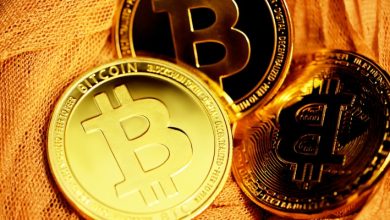What Are Synthetic Assets? A Guide to Tokenized Derivatives

- Understanding Synthetic Assets and Tokenization
- Exploring the World of Tokenized Derivatives
- The Rise of Synthetic Assets in the Financial Industry
- A Comprehensive Guide to Tokenized Derivatives
- Benefits and Risks of Investing in Synthetic Assets
- How Tokenization is Disrupting Traditional Finance
Understanding Synthetic Assets and Tokenization
Synthetic assets are financial instruments designed to simulate the value of other assets without actually holding the underlying asset. This can be achieved through tokenization, a process where real-world assets are represented digitally on a blockchain. Tokenization allows for the creation of synthetic assets that mirror the value of traditional assets such as stocks, commodities, or currencies.
By tokenizing assets, investors can gain exposure to a wide range of assets without needing to physically own them. This opens up new investment opportunities and enables diversification within a portfolio. Additionally, tokenization can make traditionally illiquid assets more accessible to a broader range of investors.
Understanding synthetic assets and tokenization is essential for anyone looking to participate in the growing world of decentralized finance (DeFi). By leveraging synthetic assets, investors can engage in activities such as trading derivatives, accessing leverage, and hedging against market risks. This can help optimize investment strategies and potentially increase returns.
Exploring the World of Tokenized Derivatives
Tokenized derivatives are a fascinating aspect of the cryptocurrency world that allows investors to gain exposure to various assets without actually owning them. By tokenizing derivatives, investors can trade a wide range of financial products, including stocks, commodities, and indices, all on a blockchain platform. This innovative approach to investing opens up a world of possibilities for traders looking to diversify their portfolios and hedge against market risks.
One of the key benefits of tokenized derivatives is their ability to provide liquidity to traditionally illiquid markets. By creating digital tokens that represent underlying assets, investors can easily buy and sell these tokens on various decentralized exchanges. This increased liquidity can help reduce price volatility and improve overall market efficiency, making it easier for investors to enter and exit positions.
Furthermore, tokenized derivatives offer a more efficient and cost-effective way to trade financial products. Traditional trading platforms often involve high fees, long settlement times, and cumbersome processes. In contrast, tokenized derivatives can be traded instantly, 24/7, with lower fees and minimal administrative overhead. This streamlined approach to trading can help investors maximize their returns and minimize their costs.
Overall, exploring the world of tokenized derivatives can provide investors with a unique opportunity to access new markets, diversify their portfolios, and optimize their trading strategies. With the growing popularity of blockchain technology and decentralized finance, tokenized derivatives are likely to play an increasingly important role in the future of finance. By understanding how these innovative financial products work and how to leverage them effectively, investors can stay ahead of the curve and capitalize on the benefits they offer.
The Rise of Synthetic Assets in the Financial Industry
In recent years, the financial industry has witnessed a significant rise in the popularity of synthetic assets. These tokenized derivatives have gained traction due to their ability to provide exposure to a wide range of assets without the need for direct ownership. This innovative financial instrument has opened up new opportunities for investors to diversify their portfolios and hedge against risks in a more efficient manner.
Synthetic assets are created by tokenizing real-world assets such as stocks, commodities, or fiat currencies. Through smart contracts on blockchain platforms, these assets can be replicated and traded in a decentralized manner. This process allows for the creation of synthetic versions of traditional financial products like options, futures, and swaps.
One of the key advantages of synthetic assets is their ability to offer liquidity and accessibility to a broader range of investors. By digitizing assets, these derivatives can be traded 24/7 on decentralized exchanges, eliminating the need for intermediaries and reducing transaction costs. This increased liquidity also means that investors can quickly enter and exit positions without the constraints of traditional markets.
Moreover, synthetic assets enable investors to engage in complex trading strategies without the need for a deep understanding of the underlying assets. With tokenized derivatives, individuals can easily gain exposure to different markets and diversify their risk without the complexities associated with traditional financial instruments. This democratization of finance has the potential to level the playing field for retail investors and increase market participation.
Overall, the rise of synthetic assets in the financial industry represents a paradigm shift in how assets are created, traded, and managed. As blockchain technology continues to evolve, we can expect to see further innovation in tokenized derivatives and their integration into mainstream financial markets. This trend towards decentralization and democratization has the potential to reshape the future of finance and open up new possibilities for investors worldwide.
A Comprehensive Guide to Tokenized Derivatives
Tokenized derivatives are a type of synthetic asset that represent underlying assets such as stocks, commodities, or currencies. These derivatives are created by issuing tokens on a blockchain that mirror the value of the underlying asset. They allow investors to gain exposure to traditional financial markets without actually owning the physical asset.
One of the key advantages of tokenized derivatives is their ability to increase liquidity in the market. By tokenizing assets, trading can occur 24/7 on decentralized exchanges, providing investors with more flexibility and opportunities to buy and sell.
Another benefit of tokenized derivatives is the ability to fractionalize ownership of assets. Investors can buy and sell fractions of tokens representing assets, allowing for greater diversification and access to a wider range of investment opportunities.
Tokenized derivatives also offer transparency and security through the use of blockchain technology. All transactions are recorded on the blockchain, providing a clear audit trail for investors. Additionally, smart contracts can be used to automate the execution of trades, reducing the risk of human error.
Overall, tokenized derivatives are a powerful tool for investors looking to access traditional markets in a more efficient and secure manner. With the potential for increased liquidity, fractional ownership, and transparency, they are shaping the future of finance.
Benefits and Risks of Investing in Synthetic Assets
Investing in synthetic assets can offer a range of benefits, but it also comes with various risks that investors should be aware of. One of the key advantages of synthetic assets is their ability to provide exposure to a wide range of assets and markets that may otherwise be difficult to access. This can help investors diversify their portfolios and potentially increase their returns over time.
Additionally, synthetic assets can be used to hedge against risks in traditional markets, providing a way to protect against potential losses. They also offer a high degree of flexibility, allowing investors to customize their exposure to different assets based on their risk tolerance and investment goals. This can help investors tailor their portfolios to meet their specific needs and preferences.
However, investing in synthetic assets also carries certain risks. One of the primary risks is counterparty risk, which refers to the possibility that the issuer of the synthetic asset may default on their obligations. This can result in the loss of the investment and potential financial losses for the investor. Additionally, synthetic assets are often complex financial instruments that require a deep understanding of the underlying assets and markets.
Another risk to consider is the potential for regulatory changes that could impact the value and liquidity of synthetic assets. Investors should stay informed about any developments in the regulatory landscape that could affect their investments. It is important to carefully assess the risks and rewards of investing in synthetic assets before making any decisions to ensure that they align with your investment objectives and risk tolerance.
How Tokenization is Disrupting Traditional Finance
Tokenization is revolutionizing the traditional financial industry by digitizing real-world assets and transforming them into tokens on a blockchain. This process enables fractional ownership of assets, making them more accessible to a wider range of investors. Tokenization also enhances liquidity, as these digital assets can be traded 24/7 on decentralized exchanges.
By tokenizing assets, financial institutions can streamline processes such as fundraising, trading, and settlement. This increased efficiency reduces costs and eliminates intermediaries, leading to faster transactions and lower fees. Furthermore, tokenization enables the creation of new investment opportunities, such as tokenized derivatives, which offer exposure to various asset classes without the need for physical ownership.
One of the key advantages of tokenized derivatives is their ability to provide access to markets that were previously inaccessible to many investors. These synthetic assets can represent a wide range of underlying assets, including stocks, commodities, and currencies. By tokenizing derivatives, investors can diversify their portfolios and hedge against market risks more effectively.
Tokenization is also disrupting the traditional finance industry by democratizing access to financial products and services. Through decentralized finance (DeFi) platforms, users can access a wide range of tokenized assets and derivatives without the need for a central authority. This decentralized approach promotes financial inclusion and empowers individuals to take control of their financial future.
Overall, tokenization is reshaping the financial landscape by making assets more liquid, accessible, and efficient. As the adoption of blockchain technology continues to grow, the potential for tokenized derivatives to revolutionize the investment landscape is vast. By leveraging the power of tokenization, investors can unlock new opportunities and navigate the evolving financial markets with confidence.



